![]()
A Brief Introduction
Welcome to ShortWaveListening !
![]()
Shortwave Listening is the exciting hobby of listening to international broadcast stations around the world on a shortwave radio. International broadcasters transmit programs in many languages. Listeners can write to these broadcasters and receive QSL cards proving that the station was heard. When writing for a QSL card program details must be noted along with frequency, and date and time of day in UTC. It is also customary and helpful to include a reception report using either the SIO (Signal strength, Interference, Overall quality) or SINPO (Signal strength, Interference - other stations, Noise - natural causes, Propagation, and Overall quality) system as well as an International Reply Coupon or two.
Shortwave transmissions are found between two and thirty megahertz. Within this span may be found 11 bands where international broadcasters may be heard. These bands are roughly defined by their wavelengths of 13, 16, 19, 25, 31, 41, 49, 60, 75, 90, and 120 meters. Said bands are separate from the "ham bands" and have been formed by international agreement. However, a few broadcasters do transmit out-of-band. Most SWL stations broadcast Amplitude Modulated signals, but some also use Single SideBand.
There are a number of new SWL receivers on the market. Used rigs can also be obtained at reasonable prices. KIØDZ's SWL receivers include a Sony ICF-2010 and Yaesu FRG-7700.
Fancy antennas are not needed for casual SWLing. Sometimes an active (whip-type) antenna or longwire with antenna tuner is sufficient. The higher the antenna the better.
Due to changing technology, many shortwave stations over the years have abandoned using the SW band and now transmit via satelite. However, there are still a good number of stations to enjoy.
SWL enthusiasts may choose to join a SWL club. One of these is the North American ShortWave Association. SWLing is also included in several publications such as "Popular Communications."
Vintage SWL QSL Cards
Note: Netscape users may "right click/view image" on rear views to see them larger. I have found browser viewers lacking when viewing these images. If you desire to see a better quality picture, capture it and view with your favorite image program. My personal preference is LViewPro (shareware).
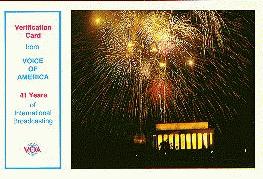 |
Voice of America United States Information Agency |
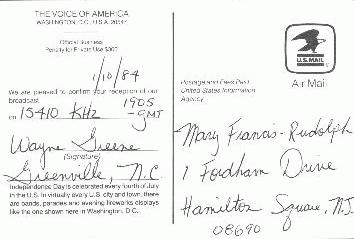 |
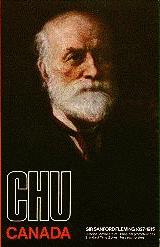 |
CHU National Research Council Canada |
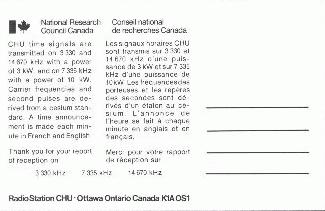 |
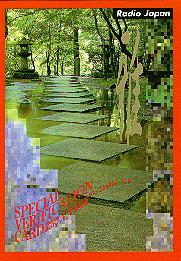 |
Radio Japan Japan Broadcasting Corporation |
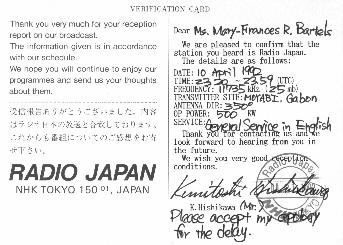 |
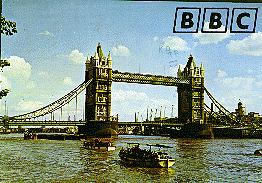 |
British Broadcasting Corporation |
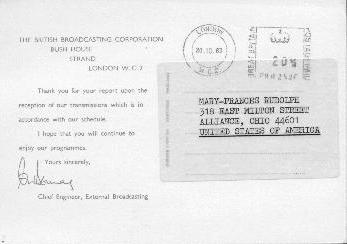 |
 |
RADIOBRÁS Rádio Nacional Do Brasil |
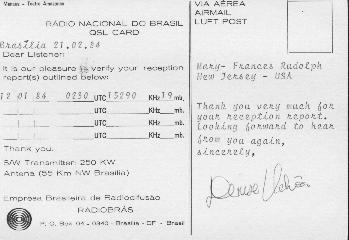 |
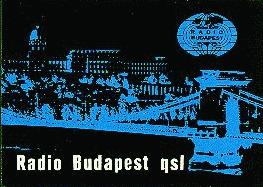 |
Radio Budapest |
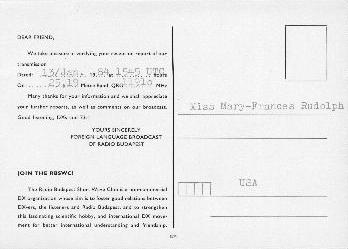 |
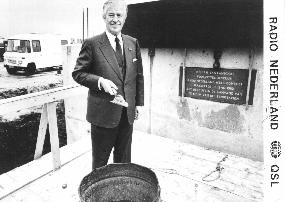 |
Radio Netherlands International (Bonaire) |
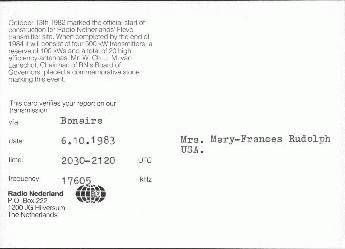 |
 |
Radio Exterior de España |
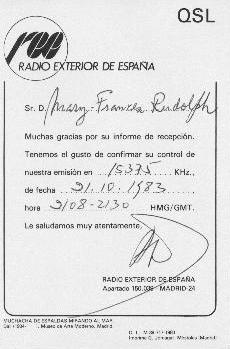 |
Page last modified June 7, 2000.
Questions, comments, suggestions, and corrections may be sent to Mary-Frances Bartels, KIØDZ, the author of this page.
Images provided by
Beyond
Infinity.